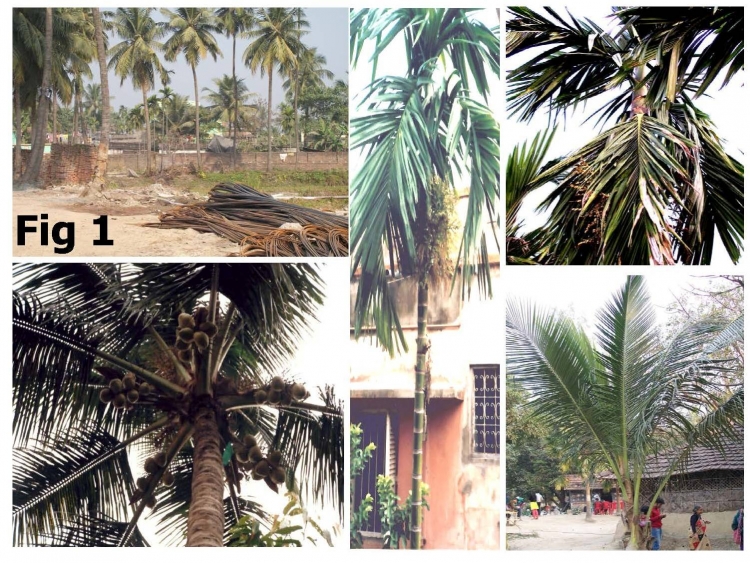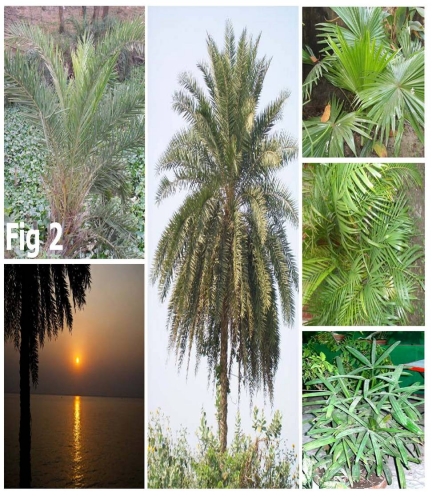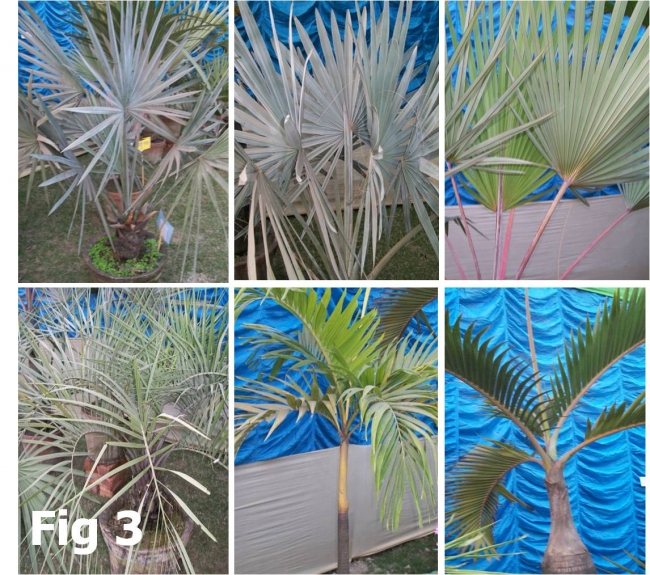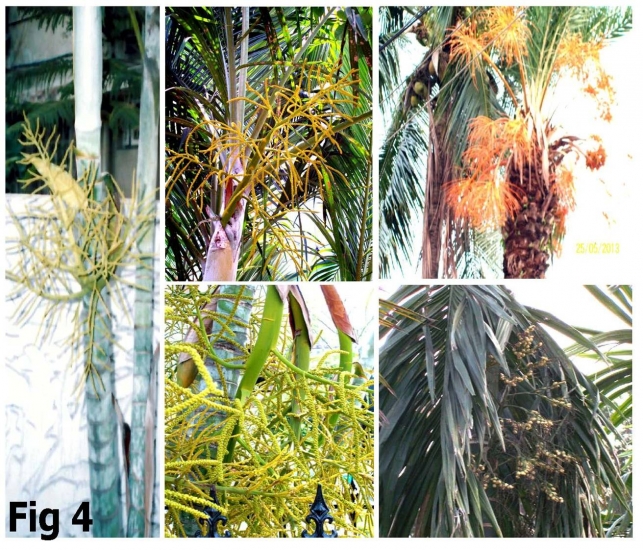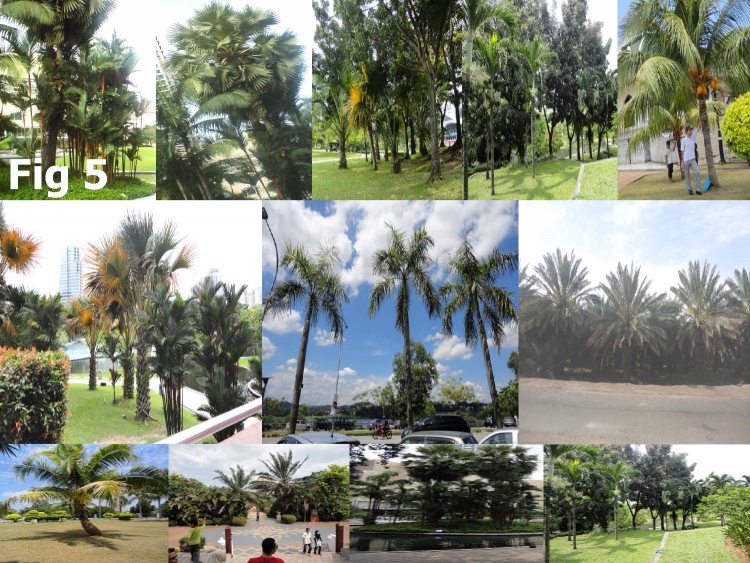Arecaceae: The Majestic Family of Palms
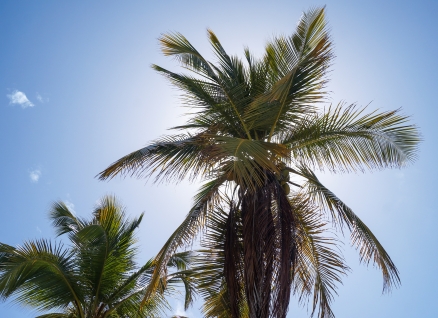
Arecaceae in Cayo Sombrero, Venezuela (By Rjcastillo (Own work) (http://creativecommons.org/licenses/by-sa/3.0), via Wikimedia Commons)
Arecaceae (Syn. Palmae) is a monocotyledonous plant family containing species of tropical climbers, shrubs and trees commonly known as Palm trees or simply Palms (Figs 1-3). The Arecaceae is amonotypic family in the order Arecales. The family contains several commercially important species such as coconuts, area nuts and date palms, as well as a large number of indoor and ornamental species. Palms are commonly cultivated andwell known horticulturallyacross the planet.
Contents
Distribution
Palms are most conspicuous incoastal areas in tropical and sub-tropical ecological zones as well as in the Arabian deserts and throughout the continents of Africa, Latin America, South and South-East Asia, Oceania and coastal US and adjoining island groups. Palms are also common in tropical evergreen forests and in every available ecological habitat in the tropics and sub-tropics covering a widely diverse geographic distribution. In the tropical forests several palms constitute the canopy while others serve as under growing bushes and shrubs.
Tall canopy forming Palms are adopted as safe nesting sites by several species of birds and smaller mammals for their huge arching foliage that provide shade and protection against the elements of nature and due to their heights serve also excellent nesting sites against different predators. Nypa fruticans is the only Palm species that is well adapted to the mangrove biome and is seen distributed in the coastal and estuarine zones of India, Bangladesh and several Pacific island groups. Palms like coastal mangrove species serve as important wind breaks and are essential for protecting the erosion and destruction of coastal areas from the impact of sporadic cyclones and tornados. However, due to extensive and non-judicious exploitation of several coastal species across the planet (particularly in the developing and under developed countries) the coastal regions have become extremely vulnerable to coan disturbances and global climate change.
Morphology
Palms are well known for their great heights, exclusive foliages, conspicuous inflorescences and big seeds. Lodoicea maldivica is known for producing the largest seed in the entire plant kingdom. Palms are predominantly perennial species and remaining green throughout the year. The inflorescence patterns of Palms are noteworthy and show wide morphological and structural adaptations (Fig 4) necessary for their successful evolution over a long geological past. They are characteristically branched, either racemose panicles or often spadix-like spikes, enclosed and protected by one or more woody bracts (spathes). Inflorescences usually occur either between the foliages or in some species beneath or above them; they may be occurring either solitary or in multiple aggregation (Fig 4). Often the inflorescences is found to be modified into an elongated organ, whip-like in appearance characterized by downward curving spines (flagellum) enabling the plant to cling to nearby vegetation or available support and help in climbing.
Important Species
Some important species belonging to this majestic plant family include edible and commercially significant members as well as ornamental and roadside as well as forest species: Areca Palm-Areca triandra, Royal Palm-Roystonea regia; Foxtail Palm-Wodyetia bifurcata, Fishtail Palm-Caryota mitis; Edible Date Palm-Phoenix dactilifera, Borassus flabellifer; Christmas Palm-Veitchia merillii, European Fan Palm-Chamaerops humilis, Majestic Palm-Ravenea rivularis, Senegal Date Palm-Phoenix reclinata, Indian Date Palm-Phoenix sylvestris, Bismarck Palm-Bismarckia nobilis; Queen Palm-Syagrus romanzoffiana, Chinese Fan Palm-Livistona chinensis, Coconut Palm-Cocos nucifera, Sylvester Palm-Phoenix sylvestris; Branched Palm-Hyphane indica; H. dichotoma etc.
Different ornamental species of palms from West Asia, South and South east Asia are presented in Fig 5. The members of the family Arecaceae is presented in Table 1.
Table 1. Members of the Arecaceae family | |||
|
Scientific & English name |
Origin |
Plant use |
Ref. |
|
Acoelorrhaphe wrightii (Griseb. & H. Wendl.) H. Wendl. ex Becc → Everglades palm |
Central America |
Ornamental tree |
USDA,2014 |
|
Acrocomia vinifera Oersted → Coyol palm |
South America |
Ornamental tree |
USDA,2014 |
|
Aiphanes caryotifolia (Kunth) H.A. Wendl. → Coyure palm |
South America |
Ornamental tree |
USDA,2014 |
|
Archontophoenix alexandrae (F. Muell.) H. Wendl. & Drude → King Alexander palm |
North-east Australia |
Ornamental tree |
USDA,2014 |
|
Butia capitata (Mart.) Becc.→ Jelly palm |
Argentina, Brazil, Uruguay |
Ornamental tree, fruit |
USDA,2014 |
|
Calyptronoma rivalis (O.F. Cook) L.H. Bailey→ Manac palm |
Puerto Rico, Haiti, Dominican Republic |
Ornamental tree |
USDA,2014 |
|
Caryota urens L.→ Toddy palm |
Indian sub continental, South east Asia |
Ornamental tree |
USDA,2014 |
|
Chamaedorea elegans Mart.→ Parlour palm |
Belize , Mexico, Guatemala |
Ornamental tree |
USDA,2014 |
|
Coccothrinax barbadensis (Lodd. ex Mart.) Becc.→ Thatch palm |
Venezuela , Caribbean islands |
Ornamental tree |
USDA,2014 |
|
Cocos nucifera L. → Coconut palm |
Tropical and subtropical area |
Ornamental tree, oil, milk, fruit |
USDA,2014 |
|
Dypsis lutescens (H. Wendl.) Beentje & Dransf.→ Butterfly palm |
Madagascar |
Ornamental tree |
USDA,2014 |
|
Elaeis oleifera (Kunth) Cortes → American oil palm |
South and Central America |
Ornamental tree, palm oil |
USDA,2014 |
|
Gaussia attenuata (O.F. Cook) Becc.→ llume palm |
Puerto Rico, Dominican Republic |
Ornamental tree |
USDA,2014 |
|
Livistona rotundifolia (Lam.) Mart.→ Serdang palm |
Sri Lanka, tropical Asia |
Ornamental tree |
USDA,2014 |
|
Phoenix dactylifera→ Date palm |
Persian gulf region (Iran, Iraq, Saudi Arabia) |
Fruit, juice |
Elshibli (2009) |
|
Phoenix reclinata Jacq.→ Senegal date palm |
Tropical Africa |
Ornamental tree, fruit, palm heart as vegetable, palm wine from its sap |
USDA,2014 |
|
Phoenix sylvestris (L.) Roxb.→ Sugar Date Palm |
Iran, India, Pakistan, Nepal, Bhutan, Burma and Bangladesh |
Ornamental tree, fruit, sap, palm heart as vegetable |
USDA,2014 |
|
Prestoea acuminata (Willd.) H.E. Moore → Sierran palm |
Puerto Rico |
Ornamental tree, fruits feed by parrots |
USDA,2014 |
|
Pritchardia affinis Becc.→ Kona palm |
Hawaiian Islands |
Ornamental tree, seeds were eaten by ancient tribes |
USDA,2014 |
|
Pritchardia glabrata Becc. & Rock→ Hawaiian fan palm |
Maui island in Hawaii |
Ornamental tree |
USDA,2014 |
|
Pritchardia hillebrandii (Kuntze) Becc.→ Loulu palm |
United states, tropical Pacific Islands |
Ornamental tree |
USDA,2014 |
|
Pritchardia limahuliensis H. St. John→ Limahuli Valley pritchardia |
Hawaii (United states) |
Ornamental tree |
USDA,2014 |
|
Pritchardia munroi Rock→ Kamalo Pritchardia |
Hawaii (United states) |
Ornamental tree |
USDA,2014 |
|
Pritchardia perlmanii C.E. Gemmill→ Wai'Oli Valley Pritchardia |
Hawaii (United states) |
Ornamental tree |
USDA,2014 |
|
Pritchardia waialealeana Read→ Poleline pritchardia |
Hawaii (United states) |
Ornamental tree |
USDA,2014 |
|
Pseudophoenix sargentii H. Wendl. ex Sarg.→ Florida cherry palm |
United states, Belize, Cuba, Bahamas |
Ornamental tree |
USDA,2014 |
|
Ptychosperma elegans (R. Br.) Blume→ Solitaire palm |
Northeastern Australia |
Ornamental tree |
USDA,2014 |
|
Ptychosperma macarthuri (H. Wendl. ex hort.) G. Nicholson→ Macarthur feather palm |
United states of America |
Ornamental tree |
USDA,2014 |
|
Rhapidophyllum hystrix (Pursh) H. Wendl. & Drude ex Drude→ Needle palm |
North America |
Ornamental tree |
USDA,2014 |
|
Roystonea borinquena O.F. Cook→ Royal palm |
Hispaniola(Puerto Rico), Virgin Islands. |
Ornamental tree, fruits used to feed pigs |
USDA,2014 |
|
Sabal mexicana Mart.→ Texas Sabal Palm |
North America |
Ornamental tree, the palm hearts and drupes are eaten |
USDA,2014 |
|
Sabal minor (Jacq.) Pers.→ Dwarf Palmetto |
Southern USA |
Ornamental tree |
USDA,2014 |
|
Serenoa repens (W. Bartram) Small→ Saw palmetto |
United states of America |
Ornamental tree |
USDA,2014 |
|
Syagrus romanzoffiana (Cham.) Glassman→ Queen palm |
Brazil |
Ornamental tree |
USDA,2014 |
|
Thrinax radiata Lodd. ex Schult. & Schult. f.→ Florida Thatch Palm |
South and central America |
Ornamental tree |
USDA,2014 |
|
Washingtonia filifera (Linden ex André) H. Wendl.→ American cotton palm ,desert fan |
Southwestern North America |
Ornamental tree |
USDA,2014 |
|
Washingtonia robusta H. Wendl.→ Mexican Fan Palm |
Mexico |
Ornamental tree |
USDA,2014 |
References and Further Reading
Elshibli S (2009) Genetic Diversity and Adaptation of Date Palm (Phoenix dactylifera L.)PhD dissertation, University of Helsinki, Helsinki, Finland. http://hdl.handle.net/10138/20761
USDA (2014) Classification for Kingdom Plantae Down to Family Solanaceae. United States Department of Agriculture, Natural Resources Conservation Service. Available at: [[1]]On 8th July, 2014
Moore Jr., H.E. New Genera and Species of Palmae from New Caledonia. L.H. Bailey Horatorium http://cybertaxonomy.eu/media/palmae/protologe/palm_tc_38309_P.pdf
List of Arecaceae genera.http://en.wikipedia.org/wiki/List_of_Arecaceae_genera
Kahn, F. and E.J.L. Ferreira (1995) A new species of Astrpocarryum (Palmae) from Acre, Brazil. Candollea 50: 321-328.http://horizon.documentation.ird.fr/exl-doc/pleins_textes/pleins_textes_6/b_fdi_43-44/010004024.pdf
Tropical nature: Palms. JungleView- Stock Photography of Jacques Jangoux. http://jangoux.photoshelter.com/gallery/Palms-Family-Arecaceae-or-Palmae/G0000s7cgeOtYkCI/
Henderson, A. (1986) A review of pollination studies in the Palmae. The Botanical Review 52:221-259.http://link.springer.com/article/10.1007%2FBF02860996
Bozbuga, R. and A. Hazir (2008)Pests of the palm (Palmae sp.) and date palm (Phoenix dactylifera) determined in Turkey and evaluation of red palm weevil (Rhynchophorus ferrugineus Olivier) (Coleoptera:Curculionidae). EPPO Bulletin 38:127-130.http://onlinelibrary.wiley.com/doi/10.1111/j.1365-2338.2008.01197.x/abstract
Hahn, W.J. (2002) A Molecular Phylogenetic Study of the Palmae (Araecacae) Based on atpB, rbcL, and 18S nrDNA Sequences. Systematic Biology 51:92-112.http://sysbio.oxfordjournals.org/content/51/1/92.full.pdf
Henderson, A. J. (2004) A Multivariate Analysis of Hyosphathe (Palmae). American Journal of Botany 91:953-965.http://www.amjbot.org/content/91/6/953.short
Araceae (Palmae)http://www.botany.hawaii.edu/faculty/carr/arec.htm
Araceae (Palmae)http://www.dipbot.unict.it/palms/Arec_fam.html
Kahn, F. amd B. Milan. (1992)Astrpcaryum (Palmae) in AmazoniaA preliminary treatment. http://www.ifeanet.org/publicaciones/boletines/21%282%29/459.pdf
Uhl, N.W. (1972) Inflorescence and flower structure in Nypa fruticans. American Journal of Botany 59:729-743. http://www.jstor.org/discover/10.2307/2441145?uid=2129&uid=2&uid=70&uid=4&sid=21104545599833
Yanase, H., S. Sata, K. Yamamoto, S. Matsuda, S. Yamamoto, and K. Okamoto. (2007) 73:2592-2599.http://www.ncbi.nlm.nih.gov/pmc/articles/PMC1855588/
Hedstrom, I. (1986) Pollen carriers of Cocos nucifera L. (Palmae) in Costa Rica and Ecuador (Neotropical region). Revista de Biological Tropical34: 297-301.http://www.ots.ac.cr/rbt/attachments/volumes/vol34-2/22_Hedstrom_Pollen_carriers.pdf
Lethal yellowing of coconut (Candidatus Phytoplasma palmae) Plantwise Knowledge Bank. http://www.plantwise.org/KnowledgeBank/Datasheet.aspx?dsid=38647
Koseck, P.R., D. S. Alviano, C.S. Alviano, and C.R. Gattass. (2007) The husk fiber of Cocos nucifera L. (Palmae) is a source of anti-neoplastic activity.Brazilian Journal of Medical and Biological Research (2007) 40: 1339-1343.http://www.scielo.br/pdf/bjmbr/v40n10/6669.pdf
Mahabale, T.S. (1967) Pollen grains in Palmae. Review of Palaeobotany and Palynology 4:299-304.http://www.sciencedirect.com/science/article/pii/0034666767901996
Galetti, M. and P.R. Guimaraes Jr. (2004) Seed dispersal of Attalea Phalerata (Palmae) by Crested Caracaras (Caracara Plancus) in the Pantanal and a review of frugivory by raptors. Ararajuba 12:133-135.http://www4.museu-goeldi.br/revistabrornito/revista/index.php/BJO/article/viewFile/2607/pdf_298
Araceae (Palmae) (palm family) Arizona-Sonora Desert Museum.Https//www.desertmuseum.org/books/nhsd_aracaceae_new.php
